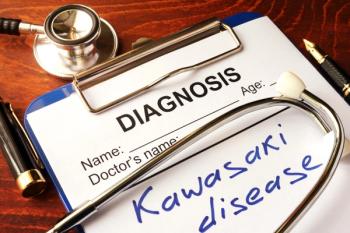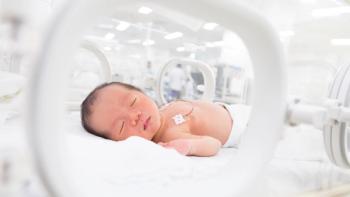
A comprehensive review reveals a minimal 0.5% risk of perinatal death in pregnancies diagnosed with vasa previa prenatally, emphasizing the importance of timely diagnosis and reduced stress for expectant families.

A comprehensive review reveals a minimal 0.5% risk of perinatal death in pregnancies diagnosed with vasa previa prenatally, emphasizing the importance of timely diagnosis and reduced stress for expectant families.

Review some of the top stories from the Contemporary OB/GYN website over the last week, and catch up on anything you may have missed.

The panel discusses the importance of discussing the immunizations with patients now, as well as the value of them in future seasons.

A recent meta-analysis reveals associations between hysterectomy combined with bilateral salpingo-oophorectomy and various health risks, urging a nuanced assessment of its benefits and drawbacks.

A recent meta-analysis reveals that digital health interventions significantly alleviate symptoms of postpartum anxiety and depression, underscoring their potential as accessible treatments for new mothers.

Recent research highlights concerns over benzodiazepine use during pregnancy, revealing a heightened risk of miscarriage.

A decade-long study confirms significant protection against human papillomavirus remains in patients vaccinated up to age 20, reinforcing the World Health Organization's single-dose vaccination recommendation for adolescents.

A recent study explores how changing sexual behaviors influence rising sexually transmitted infection rates, underscoring the need for comprehensive prevention strategies.

A recent CDC study reveals varying breastfeeding initiation rates among different racial and ethnic groups, emphasizing the importance of detailed data disaggregation for accurate public health insights.

A study revealed that higher maternal folic acid levels and frequent supplementation during pregnancy can significantly lower the risk of Kawasaki disease in infants, highlighting the potential protective role of folic acid.

The FDA emphasized the need for cautious herpes simplex virus type 2 serological testing, highlighting factors that increase the likelihood of false positives and urging adherence to CDC guidelines.

A study reveals that while gestational diabetes mellitus often impacts twin pregnancies, optimal maternal glycemic control doesn't decrease associated complications, urging further research.

A recent study found no significant difference in neonatal hypoglycemia risk between intravenous insulin infusion and continuous subcutaneous insulin infusion for intrapartum glycemic control in pregnant individuals with type 1 diabetes mellitus.

In the fourth installment of RSV Roundtable, our panel explains the challenges in protecting the senior population against RSV.

A recent study reveals disparities in breast cancer screening rates among female patients with schizophrenia in Ontario, Canada, prompting a call for expanded access to team-based primary care to address this health inequity.

A recent study reveals that Trauma Center Trauma-Sensitive Yoga, with its higher completion rates and significant symptom improvement, emerges as a promising and cost-effective alternative to cognitive processing therapy for addressing posttraumatic stress disorder (PTSD) in women veterans affected by military sexual trauma.

In the third installment of RSV Roundtable, our panel discusses the impact nirsevimab has had this RSV season.

Review some of the top stories from the Contemporary OB/GYN website over the last week, and catch up on anything you may have missed.

A comprehensive study reveals variations in monitoring low-risk cesarean delivery rates across 5 metrics, emphasizing the significance of timely and accurate assessment from birth certificate data.

Bhavik Kumar, MD, MPH, family medicine doctor in Houston, Texas, discusses how clinicians in Texas and other states where abortion is restricted can help their patients find their necessary care in light of the Kate Cox abortion case in Texas.

Daré Bioscience's DARE-PDM1 showcases promising safety, efficacy, and pharmacokinetic results in phase 1 trials, highlighting its potential to revolutionize primary dysmenorrhea treatment.

Explore the heightened demand for blood transfusions among stillbirth cases linked to suspected placental abruption, shedding light on clinical outcomes and hematologic indices.

A recent study reported the link between antenatal corticosteroid timing and the 5 and a half-year survival and neurological outcomes in preterm children, highlighting the importance of evaluating and optimizing the interval between administration and birth for improved long-term results.

Discover insights from a recent study investigating the potential link between maternal mood disorders and schizophrenia with the risk of type 1 diabetes in children, shedding light on factors impacting early childhood health.

Intrapartum antibiotic prophylaxis for Group B Streptococcus (GBS) during labor induction not only reduces clinical chorioamnionitis but also decreases peripartum infectious morbidity, suggesting potential broader applications for tailored prophylaxis beyond GBS-positive cases.

A recent study reveals that hysterectomy without an adnexal surgical procedure increases the risk of osteoporosis among women aged 40 to 59 years, emphasizing the need for informed patient consultation regarding this potential association.

New study suggests maternal migration background impacts survival rates for infants born extremely preterm, underscoring the need to address disparities in birth outcomes and investigate potential connections between immigration status and perinatal health.

A recent study unveiled a novel screening method, utilizing validated questionnaires to accurately identify myofascial urinary frequency syndrome in patients with lower urinary tract symptoms.

Recent CDC data reveals a substantial decrease in cigarette smoking during pregnancy from 2016 to 2022 across all race and ethnic groups, emphasizing positive strides in maternal and fetal health.

In the second installment of RSV Roundtable, our panel explains how they are educating patients and parents when it comes to RSV, vaccines and preventive measures, and limited treatment availability.